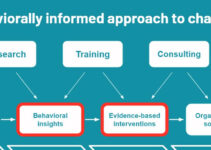Kaizen is a Japanese term that means “improvement” or “changing things for the better.” It is one of the core principles of continuous improvement and the growth and success of the company is heavily dependent on it. Today, we’ll discuss the Kaizen 5S framework in Workplace; its definition; advantages, and disadvantages of continuous improvement 5S Kaizen.
What is the Kaizen 5S Framework in Workplace?
Kaizen 5S framework in workplace is a very popular continuous improvement philosophy that businesses and companies employ in their workplaces. It comprises 5 Japanese words; Seiri, Seiton, Seiso, Seiketsu, and Shitsuke; in English it means; Sort, Set in Order, Shine, Standardize, and Sustain.
However, the continuous improvement 5S Kaizen framework offers businesses strategic approaches to amplify productivity in the workplace. It allows them to segment every step, so that they could gain maximum productivity out of it. The focus of the 5S framework is to achieve the following;
- Safety and service of companies
- Efficiency
- High profitability
- Clean, organized, standardized order
- Structure
- Disciplined approach
Elements of Kaizen 5S Framework in Workplace
Let’s discuss the elements of Kaizen framework in workplace or continuous improvement 5S Kaizen; they’re as follows;
Sort (Seiri)
In order to remove randomness and disorder, Seiri or Sorting would focus on reviewing and analyzing the elements and deciding whether they type elements and factors are necessary or not. Limited disorder and disorganization would direct and lead you to develop a safe and secure workplace. It is difficult to throw away unnecessary items and products, and it helps you to amplify efficiency and space.
The separation and segmentation would compel users to think and analyze the type of items they’re using in their daily routine lives. If you aren’t sure about the utility of certain types of items; then you should create an “unknown category” and analyze their performance in a particular time period. However, it offers you a key insight into their utility in the workspace. It would make workers and employees surprised to find a plethora of unnecessary items in the workplace that are causing inefficiency and jeopardizing productivity.
Set In or System (Seiton)
The term section outlines developing a system in the particular workplace. The systematic approach would make sure that there should be a specific space for every item, and they should be there in their precise place. It is significant that you should label every place with particular items and element numbers, it allows you to systemize your standardization and storage.
Seiton plays a key role in the flow and movement of goods in the workplace. It is significant that you should be aware of the utility of the items and products at what time. Entrance and leaving time of the items in the workplace, categorizing and analyzing the objectives of the items, it is significant for systemizing.
Shine (Seiso)
The Seiso term implies cleaning the floor, tools, and equipment in the workplace environment. It also means verifying; that when the operator cleans the tools, equipment, and equipment would discover the flaws and malfunctioning areas. It would be difficult to recognize the developing and growing issues; if the machine is dusty, sooty, or oily. Some of the main problems that you can find while cleaning the machine are as follows;
- Loose bolts or nuts
- Developing cracks
- Finding the oil leaks
Once you detect the problem, then it is easier to resolve and fix the issue. Many technicians said that the problem in the machine starts with vibrating due to loose nuts and bolts, limited lubrication, rusting, or dusting.
Standardize (Seiketsu)
The term Seiketsu means developing successful, efficient, and safe strategies in the workplace that would effectively complete various processes and avoid duplications. It focuses on promoting workplace safety and sharing various tasks and activities among other employees and team members.
Efficiently and safely completing the tasks would help you to detect and fix problems and failures and apply this learned technique and strategic approach in other areas. It is beneficial and easier for many employers to set up rules and standards and make employees accountable to their standards.
Sustain (Shitsuke)
Sustaining is the 5S in the Kaizen continuous improvement framework, it is a highly difficult step in the process. It has to be consistent with other elements, and maintenance means continuous drive and struggle towards improvement. However, the process doesn’t mean that you can evolve or improve over time. Some of the never-ending processes in the workplace are as follows;
- Maintenance of the workplace
- High productivity
- Improved safety
- Taking care of time
Advantages of Kaizen 5S Framework in Workplace
Some of the main benefits and advantages of Kaizen 5S framework in workplace or continuous improvement of 5S Kaizen are as follows;
Commitment of Employees
When all the team members and employees are performing their roles to bring positive changes in the workplace; then it promotes employees’ commitment and satisfaction. Ultimately, it leads toward better customer satisfaction level.
Lower Waste
It focuses on efficiency and workers and employees won’t waste the company’s time, resources, and assets. Businesses and companies could easily achieve their goals and objectives with limited waste of time and resources.
Better Safety
The focus of the 5S model is to improve cleanliness, safety, and maintaining orders. It encourages and boosts the morale of employees and staff to promote safety at every step of the process.
High Productivity
When all the processes are performing at their optimum level, then high productivity is the ultimate result.
Improved Quality
High quality is the opposite of waste. It is only possible when the employees and workers are performing efficiently, rather than wasting resources in testing and experimentation.
Disadvantages of Continuous Improvement 5S Kaizen Framework
Some of the main challenges and disadvantages of Kaizen 5S framework in workplace or continuous improvement 5S Kaizen are as follows;
- Lower Scope because it only focuses on improving productivity and growth
- Over-reliance on the internal processes of the company rather than analyzing the external factors
- Employee Resistance to adapt to the new behavior is the main issue
- Avoiding the Big Picture of the company and only focusing on the internal processes of the company
- Slow Process, Implementing the 5S framework takes time, and you need to immediate action sometimes
Conclusion: Kaizen 5S Framework in Workplace |Continuous Improvement 5S Kaizen
After an in-depth study of the Kaizen 5S framework in workplace; we have realized that 5S framework plays a key role in process improvement. If you are learning about continuous improvement 5S Kaizen; then you should keep in mind the abovementioned definition, elements, advantages, and disadvantages.
Ahsan is an accomplished researcher and has a deep insight in worldly life affairs. He goes Live 3 days a week on various social media platforms. Other than research writing, he’s a very interesting person.


